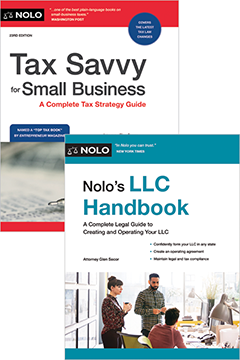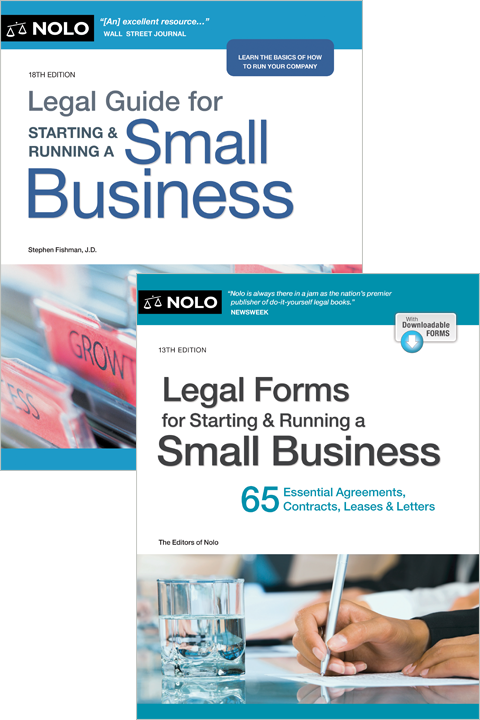If you’re planning on converting your LLC to a corporation in California, you’ll need to create a conversion plan, vote on it, and file articles with the Golden State.
Businesses switch up their products, expand into other industries, and re-brand every day. An established company can also change its business structure. For instance, you can convert your limited liability company (LLC) to a corporation.
California provides a specific process to convert your California LLC to a corporation. The conversion process might vary depending on your specific situation. However, this article will provide general guidance on the process. (For more information, read our overview on converting an LLC to a corporation or S corporation.)
- California Laws on Converting Your LLC to a Corporation
- Review Your LLC Operating Agreement
- Prepare a Plan of Conversion to Turn Your LLC Into a California Corporation
- LLC Members Vote on the Plan of Conversion
- File Conversion Paperwork with the Secretary of State
- How Assets and Liabilities Are Transferred After Conversion
- What to Do After You File Your Conversion Paperwork
- Additional Guidance About Converting Your California LLC to a California Corporation
California Laws on Converting Your LLC to a Corporation
In California, you can convert your LLC to a corporation in two different ways:
- Statutory conversion: Your LLC's assets and liabilities will be automatically transferred to the new corporation without the need to create a new, separate entity.
- Statutory merger: You'll need to file to create a new corporation before your LLC's assets and liabilities can be transferred over.
Because you have your choice of conversion method, you should choose a statutory conversion. The process is much less complicated and doesn't require you to create a new company to convert your existing one.
To convert your California LLC to a California corporation by statutory conversion, you need to:
- prepare a plan of conversion that includes, or has attached to it, articles of incorporation for the new corporation
- get the LLC members to approve the plan of conversion, and
- file certificate of conversion and articles of incorporation with the California Secretary of State (SOS).
Key elements of the conversion procedure are laid out in the following sections of California's corporation law: Cal. Corp. Code §§ 17710.01-17710.19 (2023).
Review Your LLC Operating Agreement
California's laws on corporations set out the requirements for a statutory conversion. But you might have to follow additional requirements in your LLC operating agreement. For instance, your operating agreement might require all members to approve the conversion in a meeting.
Make sure your operating agreement follows California law. If your operating agreement doesn't cover a particular part of the conversion process, you'll need to follow California's default rules for converting your LLC.
Prepare a Plan of Conversion to Turn Your LLC Into a California Corporation
To convert your LLC, you'll need to create a plan of conversion. Your plan must include the following information:
- the terms and conditions of the conversion
- where your new business will be formed (in California) and its new name
- how the LLC membership interests will be converted into shares of corporate stock; and
- the proposed corporate bylaws.
(Cal. Corp. Code § 17710.03 (2023).)
Your plan can include additional rules and procedures for the conversion. For example, your plan of conversion can also include the LLC operating agreement.
LLC Members Vote on the Plan of Conversion
The LLC members will need to vote to approve the conversion and the plan of conversion. California's LLC conversion laws don't explicitly require that you notify LLC members about a meeting to approve a conversion, but you might find that you're required to do so under your operating agreement or under other California LLC laws.
For manager-managed LLCs, the default law requires approval by all managers and a majority of the members of each class of membership interest. For member-managed LLCs, the default law requires approval by a majority of the members of each class of membership. However, your operating agreement might require more than a simple majority of the voting members. (Cal. Corp. Code § 17710.03 (2023).)
Generally, the plan of conversion can be amended or abandoned prior to filing the conversion paperwork with the SOS. You can modify or abandon the plan in the same way the plan was approved—in other words, with the approval of all managers (for manager-managed LLCs) and a majority of the members of each class of membership. (Cal. Corp. Code § 17710.03 (2023).)
File Conversion Paperwork with the Secretary of State
Once your conversion has been approved, you'll need to file articles of incorporation, including a statement of conversion, with the SOS. California provides a single document containing a cover sheet, articles of incorporation, and statement of conversion that you can complete and mail to the SOS Business Programs Division.
You can also file online. As of 2023, the filing fee is $150.
California Statement of Conversion
The statement of conversion provides basic information about your LLC and proposed new corporation, such as:
- the name of your LLC and the SOS's file number for that LLC, and
- a statement that the plan of conversion was approved by the required vote.
(Cal. Corp. Code § 17710.06 (2023).)
The statement of conversion must be signed by all members of a member-managed LLC or all managers of a manager-managed LLC unless a lesser number is allowed under the LLC's articles of organization or operating agreement.
California Articles of Incorporation
As mentioned above, when using the Secretary of State's conversion form, the statement of conversion is included within the required articles of incorporation. As the form makes clear, the articles of incorporation can be relatively simple. At a minimum, they should include:
- the name of the corporation, including the appropriate suffix (for example, "Inc." or "Corp.")
- a statement of purpose of the corporation (what types of activities it'll engage in)
- the corporation's principal place of business and mailing address
- the name, California street address, and signature of the corporation's registered agent
- the number of shares of stock the corporation is authorized to issue, and
- information about the different classes of stock, if there's more than one class.
(Cal. Corp. Code § 202 (2023).)
While the statement of conversion and articles of incorporation, which form the document package mentioned above, might appear straightforward, converting your particular business could involve unexpected complications. For that reason, it's generally a good idea to seek the assistance of a business attorney.
How Assets and Liabilities Are Transferred After Conversion
When you convert your LLC to a corporation, generally everything associated with your LLC will transfer to the new corporation as if the conversion didn't occur.
Specifically, the following that once existed under the LLC will now continue under the corporation:
- all of the property belonging to the LLC
- all debts, liabilities, and other obligations of the LLC
- all rights of creditors regarding, and liens on, any LLC property
- all pending legal actions or proceedings against the LLC
- all obligations of the LLC for which an LLC member was personally liable, and
- all obligations of the LLC itself.
(Cal. Corp. Code § 17710.09 (2023).)
If your LLC owns a piece of property, your new corporation will now own that property. With real estate, you'll need to file your articles of incorporation with the county recorder of the county where that real estate is located. (Cal. Corp. Code § 17710.07 (2023).)
What to Do After You File Your Conversion Paperwork
Apart from the above steps, you'll also need to take care of all the tasks normally associated with creating and maintaining a new corporation, such as:
- drafting corporate bylaws
- electing corporate officers and appointing corporate directors
- holding an initial board meeting
- creating a shareholders' agreement
- issuing stock certificates
- using the official corporation name on your business documents, and
- filing the required annual Statement of Information with the SOS.
You can ensure that your business continues to have limited liability and can take advantage of various tax benefits by following those formalities.
One other critical step in the conversion process is to make sure that no business contracts—such as loan agreements, commercial lease agreements, and licenses and permits—will be affected by your business's entity change.
Additional Guidance About Converting Your California LLC to a California Corporation
Before you start the conversion process, make sure you understand the differences between the business structures and the result of converting your LLC to a corporation. While California's conversion process is relatively simple compared to other states, it's important that the conversion process is done correctly.
Moreover, California has additional and distinct legal requirements for corporations that you'll need to follow. If you need legal assistance with converting your LLC or complying with the state's corporation laws, you should talk to a business attorney.
For a more complete discussion of the steps involved in running a business, check out Nolo's Start & Run a Business Bundle.
- California Laws on Converting Your LLC to a Corporation
- Review Your LLC Operating Agreement
- Prepare a Plan of Conversion to Turn Your LLC Into a California Corporation
- LLC Members Vote on the Plan of Conversion
- File Conversion Paperwork with the Secretary of State
- How Assets and Liabilities Are Transferred After Conversion
- What to Do After You File Your Conversion Paperwork
- Additional Guidance About Converting Your California LLC to a California Corporation



